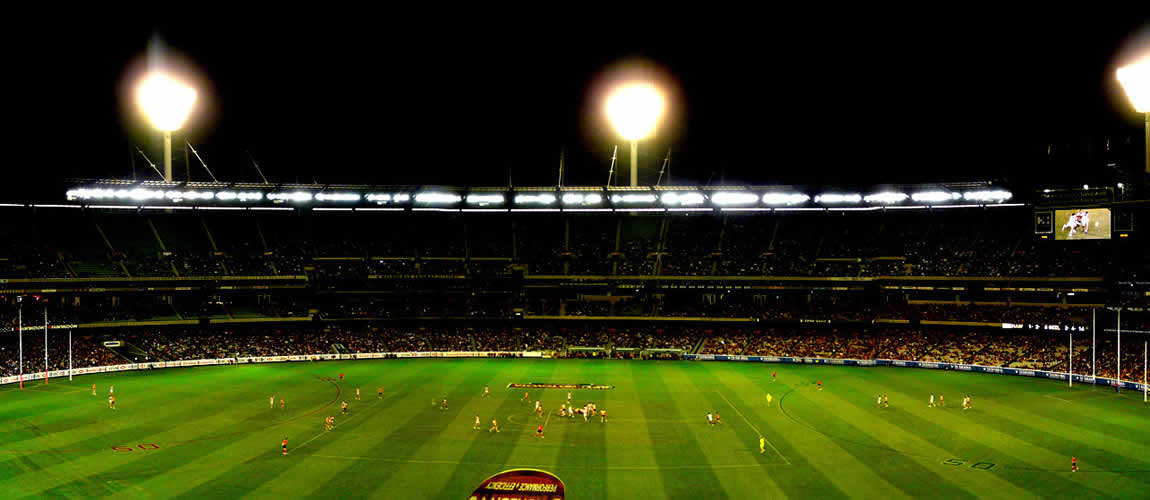The game originated in Melbourne, Victoria in the late 1850s as a mixture of the different kinds of football played in the schools of the city. Even today, 10 of the 18 teams in the Australian Football League are located in Victoria.
On the surface, Aussie rules appears to be a strange hybrid between American football, rugby, even basketball, and played on a cricket pitch - it looks confusing. But, as is the case with a lot of sports, it’s not that difficult to understand. In fact, it’s very simple.
Here, we run through the basics so you know what you’re cheering about when you catch a game Down Under.
The premise of Aussie rules
The basic idea for Aussie rules is two teams of 18 players competing to kick an egg-shaped ball between the middle two of four goal posts. In terms of attendance and viewers on television, it’s the most popular sport in Australia.

There is no set size for the field - teams can choose from 110-155 metres in width and 135-185 metres in length for their pitch.
Players are allowed to run with the ball as in rugby, with the difference being in Aussie rules that they must bounce it on the ground at least once every 15 metres, or pass it to a teammate.
Scoring in Aussie rules
Kicking the ball cleanly between the central posts is the aim of every attack. This is because six points are awarded to the side which manages a goal, by far and away the highest of all scoring options.
There is also what is known as a behind, which means that the ball crosses the goalline but doesn’t go clean through the central posts. If a kick misses and goes between the outer posts, or if it hits a post before going through this counts as a behind, and one point is awarded.
Tackling in Aussie rules
There is more contact allowed in Aussie rules than association football, but less than you would typically see in rugby or American football. Players (like Ben Cousins below) are allowed to ‘check’ an opponent using hips, shoulders, chest, arms or hands if the ball is within five metres of him.

Tackles above the neck, below the knees or in the back are not allowed and free kicks are given against any opponent deemed to make an illegal tackle. Although there are no bookings or sendings off, which adds to the game’s reputation as a sport for those made out of nails.
Jargon buster
Handball: In 'normal' football a handball often results in a penalty to the other team, but in Aussie rules this is a way of passing using a fist to push the ball to a teammate.
Mark: If the ball is kicked further than 15 metres, a player can call a mark, which means he cannot be tackled for a short period of time.
Small fracas: This is what, in other sports, is known as a huge brawl.
Sport is a way of life for a lot of Australians, so it’s really worth trying to catch a game of Aussie rules when you visit the country. Especially if you're heading to the footy mad state of Victoria.



